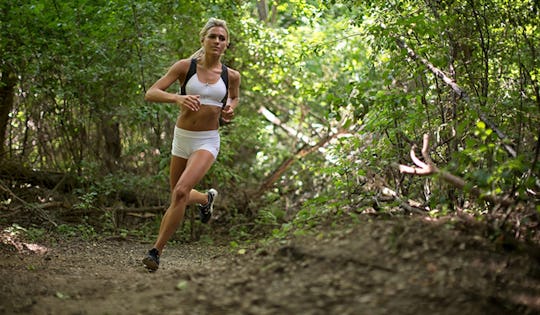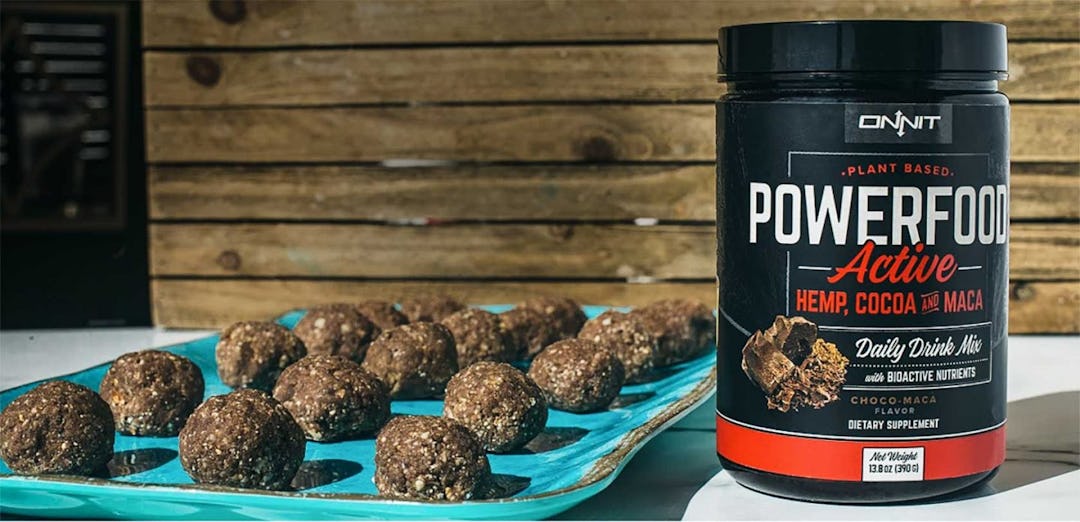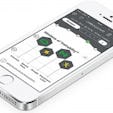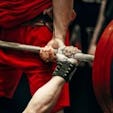Running. We are born to do it. This is how we came to survive and evolve.
Not this girl. When I started running I felt like a hippo with a gas cramp. I couldn’t run more than 2km without everything hurting! Over the past two years, I have had a heel spur and stress fracture in my left foot, a torn psoas and bulged two disks in my lower back. I tried everything from orthotics, Graston, massage, acupuncture, cortisone injection, an air cast to shock-wave therapy to help me get back to running. But my feet kept failing me and the rest of my body would always follow suit.
What I failed to realize from all this ’therapy’ is that I was denying the one thing that was going to help me. The one thing all my doctors told me I shouldn’t do and would never be able to do again without further injuring myself. Run. Your feet are the foundation for your entire of your body. They are the supports on which the rest of your joints sit on. If they are comatose, the remainder of you will be too. If you have suffered an injury or are trying to avoid one, here are five ways to help you run pain-free.
Tip #1: Pain Free Running With Minimalist Shoes
I’m sure by now you have all seen these shoes. Some are wackier looking than others with their sock like split toes or glove forms, but these shoes serve an amazing purpose. By allowing you to run like your primal Homo sapiens ancestors, they can help you self correct your running technique. Pain is an indicator that your form is bad, but if you have your feet stuffed into giant space pillows, you won’t be able to feel ANYTHING!
Instead, opt for a good minimalist runner like Zem Gear, Innov8, or Vibram 5 Fingers.These shoes are the closest to barefoot running as you can get, or you could always just go for it and not wear shoes. I live in a city and am not a big fan of getting stuck with needles or glass (I’m not that Die Hard I guess). As a result of these toe-glove loves, you will begin to focus your form on forefoot running, avoiding heel striking and damage to your knees and hips.
If you have never run in a minimalist shoe, introduce your feet to them incrementally. Believe me, the first day you put on those new seemingly weightless slippers, your joints will thank you. You will feel like Apollo pulling the chariot across the sky to make the sun rise. But beware, your feet are lazy from years of coddling them.
So you MUST approach your running/ walking (if that’s what’s available to you at this point) as a joint preparation practice. Do not overdo it in the beginning. Listen to your body. If it’s talking to you, good. If it’s screaming at you, bad.You have to realize that as a result of your foot arches being dormant for so long, there is a price to pay.
Your soft tissues, ligaments, tendons and joints (in your feet, knees and hips) are weak. If you drive them full blast like a crash test dummy into a wall, you may risk injury. Plantar fascists is the most common. I’ll get into how to care for that later in the TLC section of this article.
Tip #2: Pain Free Running with Mobility Exercises
Don’t stretch before you run, your body is cold. That’s like waking up to a pretty girl/boy in the morning and kicking her/him out before you at least offer to make them a coffee. Bad bad. Instead of stretching, incorporate some joint mobility into your practice. This brings your central nervous system online, increases blood flow, lubricates your joints with synovial fluid, and allows you to check for stalls in your range of motion. In simple terms, this allows your body to not only gently rise to the challenge, but it builds healthier joints, thus preventing injury.
Tip #3: Pain Free Running with the Power of Squats
We may have been “born to run” but we were also Born to Squat! Picking up heavy things was also a huge part of our ancestral lives. Nowadays, we have invented too many devices to do our duties for us. If you’re always complaining of knee, hip, and back pain, but running is all you do, guess what, you are missing the other half of your caveman calling.
Squatting and lunging BEYOND 90 DEGREES is essential to having healthy, balanced joints. Why? Let’s talk geeky for a minute. In your leg you have four quadricep muscles:
- Rectus Femoris - Big guy on top of the three smaller ones; attaches to the ilium, runs down middle of the thigh responsible for knee extension and hip flexion.
- Vastus Lateralis - Smaller guy on the outer side of thigh.
- Vastus Medialis - Smaller guy on the inner part of thigh.
- Vastus Intermedius - Smaller middle child between Lateralis and Medialis, hidden unless you remove Rectus Femorisfrom the limelight.
All four quad muscles ultimately insert to the tibia through the patella (kneecap). If you are never bending your legs beyond 90 degrees, you are not fully activating all your quad muscles, especially Vastus Medialis Oblique (head of VM that is an active and dynamic stabilizer of the patella). Not to mention squatting and lunging to full range of motion also demands more hamstring and glute activation, further balancing out your leg musculature and giving you a fresh, off-the-beach looking booty and the vertical jumping power of a velociraptor. So, at the very least try working in bodyweight squats or lunges into your daily warm up, as well as squatting with resistance at least twice a week.
Tip #4: Pain Free Running with Pacing
Even Usain Bolt has a plan… first you must learn to walk before you can run. Running should feel light, effortless, and make no sound. Think of running as a graceful falling; as you progress in your practice, you should become more efficient in your technique, and that’s where speed can start to coming into play.
Here’s a simple drill you can practice against a wall or with a partner. Start with your body in a tall, upright position. Next, lean into them as if you were falling forward without breaking your alignment at the hips. Your partner should support you at the shoulders.
From this falling forward position, work on running in place on your forefeet; this is quick and springy. You are trying tominimize your contact time with the ground in order to optimize your body’s natural elastic and recoil action. In simpler terms, imagine you are crossing a bed of hot coals. Follow this by paying attention to your heel pulling. Heels are under your hips as you run. Your speed will determine the height of your heel as a result of you actively pulling your knee forward for your next step.
As you land the foot is under your hip, the center of mass, hence the falling forward motion. Your head is neutral, shoulders, and arms relaxed, allowing them to rotated and pump easily with the rest of your body. Breathing is free of tension. For distance running you should be able to carry on a light conversation, pacing yourself properly to endure the length of your adventure. For sprinting, let’s just say if you have time to talk, you’ll have to save the gold medal for next year.
Tip #5: Post Workout Pain Free Running Tips
Plantar Care
Using a lacrosse or golf ball (latter if you’re really into S&M) or frozen water bottle (if you tend to have inflammation), massagethe bottom of your foot by pressing your weight onto the object and rolling into the areas you feel tightness. A little massage goes a long way. Do this as many times as you like throughout the course of your day.
Achilles Stretch
Placing your forefoot on a wall with your heel on stable surface, lean your weight into the wall. Having your heel on a stable surface will help your calf muscles to relax more and deepen the stretch versus hanging it off a stair or box. Try angling your toes inward then outward to target different areas of your calves. Repeat this stretch with your whole foot on the ground, leaning into a wall to stretch into your soleus.
Shifting Pigeons for Your Tight Butt
While assuming a lunge position and keeping your front foot firmly planted on the ground with your hands on either side of it, try to bring your belly button to your foot. You should feel your glutes start to open up. Do ten passes with your foot stuck to the ground and then ten with it leaving the ground and everything, deepening the range of motion. This is also good joint prep for your knees and hips.
Quad, Hammie, It Band & Calve Mashing
This is a sensory rich experience. Using a hard roller like that of the Indo Board or my personal favorite, the cuff of a barbell, mash these areas like you were rolling out dough. Make sure you run the entire length of each muscle, stopping to tack the areas where you feel the most tightness. Use back and forth and side to side actions. Do not roll over the joints (obviously that will hurt.

)





